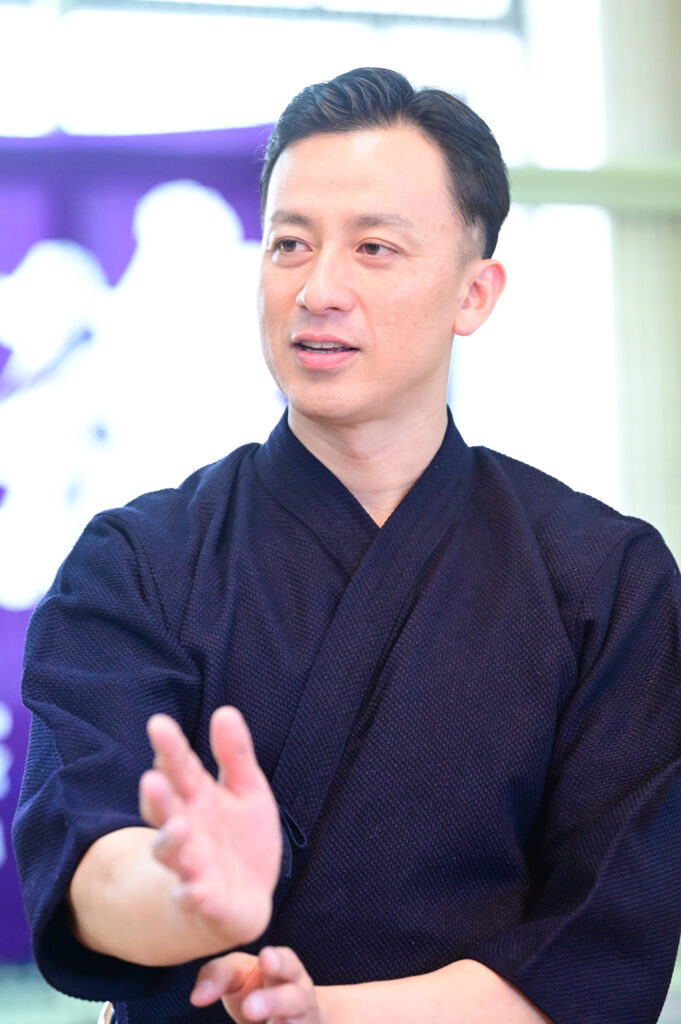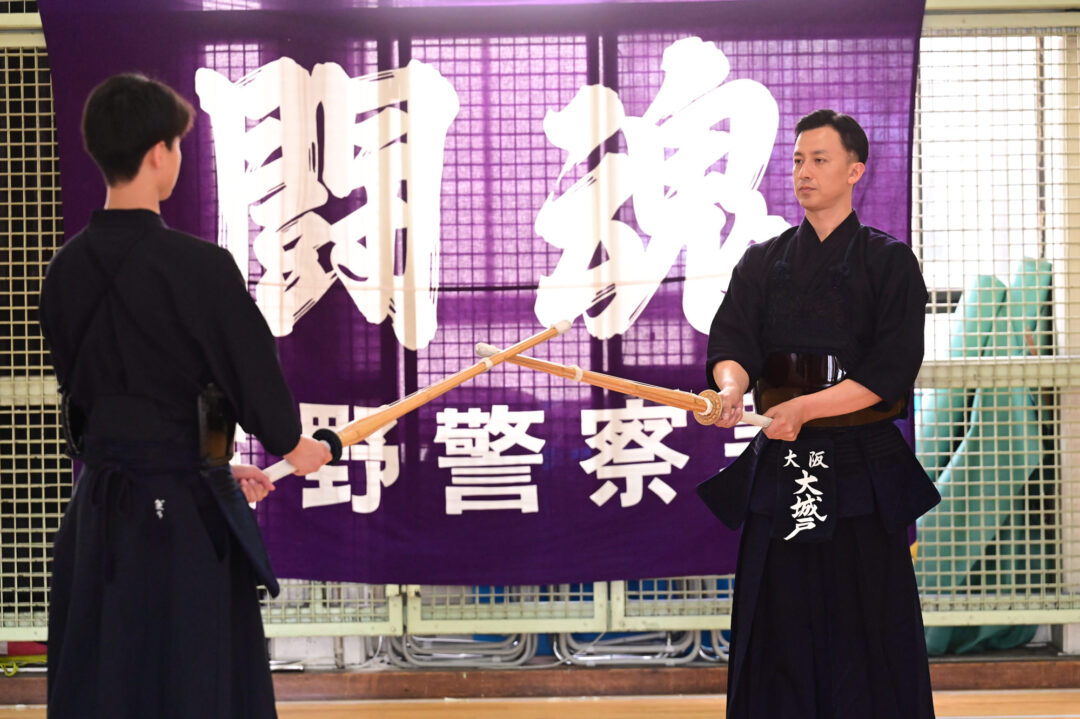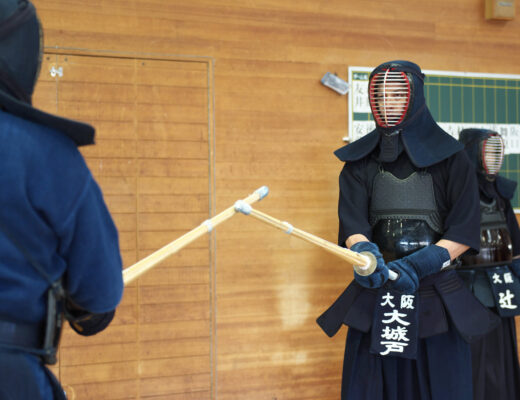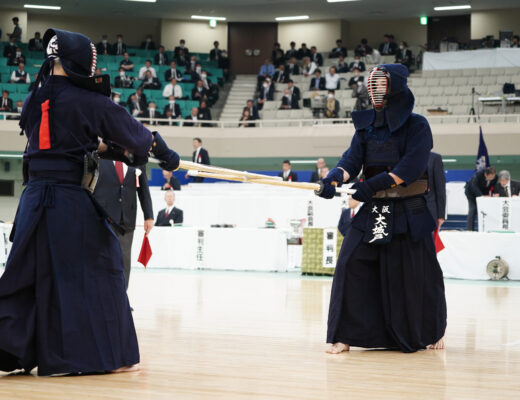2024.8 KENDOJIDAI
Photography = Nishiguchi Kunihiko
Translation = Mariko Sato, Pepijn Boomgaard
How do you usually focus on creating your Kamae, and what specific points do you consciously pay attention to? How do you perceive your ‘Ideal Kamae’? In this article, I interviewed a top-tier Kendo-ka to learn what he focuses on when it comes to his Kamae.
******
“When facing an opponent, I focus on whether I am giving off a sense of intimidation and whether my ‘kamae’ is effectively conveying my intention to attack,” says Okido Sensei. After retiring from the Tokuren(*), he has been particularly dedicated to the meticulous process of pressuring his opponent before executing a technique. He shared his insights on the process from attacking with a solid Kamae, breaking the opponent’s defense, and connecting it to a decisive strike.
*Tokuren
In Japan, some police officers undergo a training program known as “Jutsuka Tokubetsu Kunren” (術科特別訓練), which is abbreviated as “Tokuren” (特練). Many of these specially trained officers are assigned to the riot police units, known as “Kidotai” (機動隊).
Okido Satoru (Renshi 7th Dan)

I first began to understand the importance of Kamae during my time at Nitta High School. My coach, Watanabe Norio Sensei, corrected my Kamae, as my Kensen was too low, instructing me to aim it towards the opponent’s chest.
I went to the National Institute of Fitness and Sports in Kanoya, where I learned a more aggressive style of Kendo. The focus was on quick, decisive strikes when an opportunity arose, with an emphasis on slightly extending the hands forward while maintaining a ready position.
My Kendo style hasn’t changed much since I was young, and I often received advice to “move forward” and “be more aggressive.” After graduating from university, during my time as a Tokuren member, I tried to follow this advice, but it didn’t seem to align with my natural style, resulting in a period where I struggled to achieve significant results.
At the age of 27, I was honored to represent Japan at the 15th World Kendo Championships and aimed for consecutive appearances, but that goal was not achieved. However, I was able to compete again in the 17th WKC held in Korea. I vividly remember that during those six years, I focused intensely on the connection between Kamae and Seme.
While speed and power are important in Kendo, I learned to prioritize the sequence of “pressuring, breaking, and striking,” paying particular attention to the moment before executing a technique. When facing an opponent in Kamae, there are moments when both of us sense “something.” I believe that increasing the frequency with which the opponent senses this “something” leads to effective Seme.
Rising from Sonkyo, I face my opponent with full concentration. As I close the distance to Shokujin No Maai (the distance where the swords touch), I focus on erasing any signs of my intent, suppressing the urge to strike, and instead, try to draw out my opponent’s attack. Knowing that merely waiting can cause a delayed response, I strive to execute my technique at the exact moment when I sense our energies align and both of us are about to move.
Adjusting the Kensen to Counter Any Kamae
The rest of this article is only available for Kendo Jidai International subscribers!





